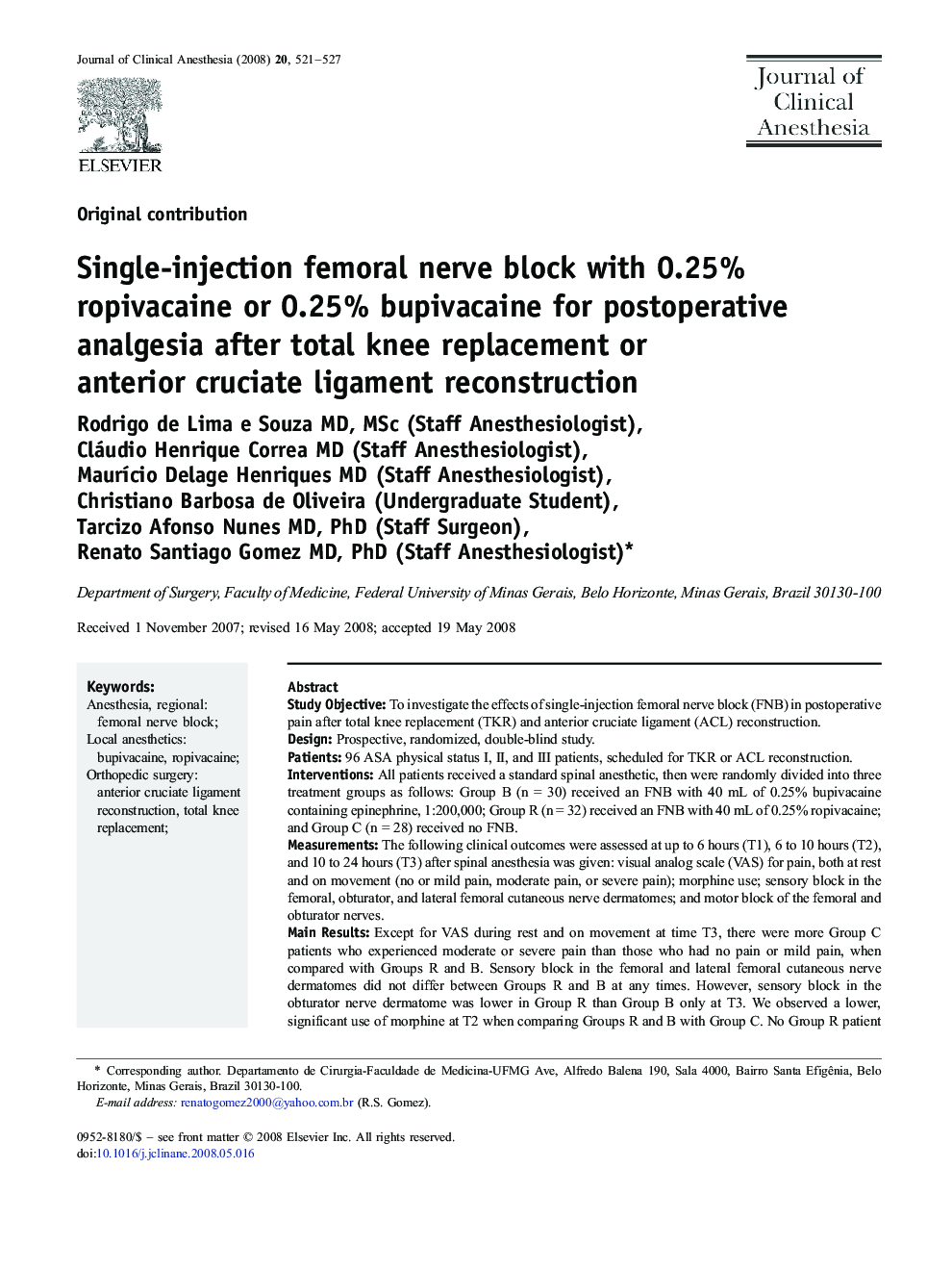| Article ID | Journal | Published Year | Pages | File Type |
|---|---|---|---|---|
| 2763661 | Journal of Clinical Anesthesia | 2008 | 7 Pages |
Study ObjectiveTo investigate the effects of single-injection femoral nerve block (FNB) in postoperative pain after total knee replacement (TKR) and anterior cruciate ligament (ACL) reconstruction.DesignProspective, randomized, double-blind study.Patients96 ASA physical status I, II, and III patients, scheduled for TKR or ACL reconstruction.InterventionsAll patients received a standard spinal anesthetic, then were randomly divided into three treatment groups as follows: Group B (n = 30) received an FNB with 40 mL of 0.25% bupivacaine containing epinephrine, 1:200,000; Group R (n = 32) received an FNB with 40 mL of 0.25% ropivacaine; and Group C (n = 28) received no FNB.MeasurementsThe following clinical outcomes were assessed at up to 6 hours (T1), 6 to 10 hours (T2), and 10 to 24 hours (T3) after spinal anesthesia was given: visual analog scale (VAS) for pain, both at rest and on movement (no or mild pain, moderate pain, or severe pain); morphine use; sensory block in the femoral, obturator, and lateral femoral cutaneous nerve dermatomes; and motor block of the femoral and obturator nerves.Main ResultsExcept for VAS during rest and on movement at time T3, there were more Group C patients who experienced moderate or severe pain than those who had no pain or mild pain, when compared with Groups R and B. Sensory block in the femoral and lateral femoral cutaneous nerve dermatomes did not differ between Groups R and B at any times. However, sensory block in the obturator nerve dermatome was lower in Group R than Group B only at T3. We observed a lower, significant use of morphine at T2 when comparing Groups R and B with Group C. No Group R patient and about 30% of Group B patients remained with motor block of femoral and obturator nerves at T3. Except for frequency of nausea, which was highest in Group C, the frequency of other side effects was similar among the three groups.ConclusionsFemoral nerve block using 0.25% ropivacaine or 0.25% bupivacaine is an effective method of postoperative analgesia after TKR and ACL reconstruction, particularly for the first 10 hours after spinal anesthesia.
